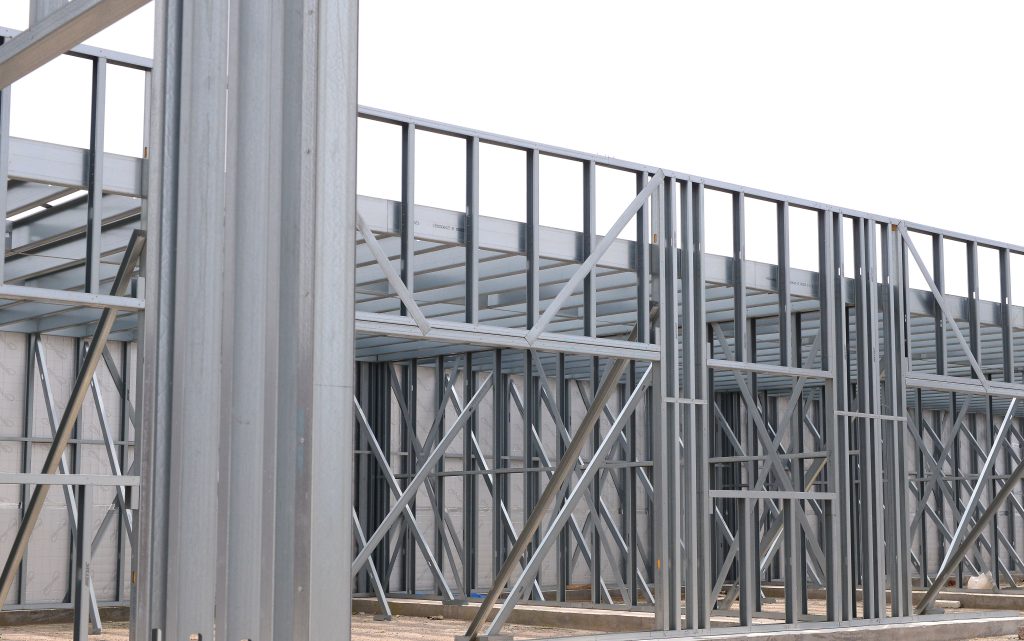The Battle of the Frames - Steel vs Wood - Which One Reigns Supreme?
The Battle of The Frames, Steel vs Wood. When it comes to constructing buildings, two materials have long dominated the industry: steel and wood. Both steel and wood frames have their own unique characteristics and advantages. In this article, we will delve deep into the battle between steel and wood frames to determine which one truly reigns supreme.
Pros and Cons of Steel Framing
Steel framing offers numerous benefits that make it an attractive choice for many construction projects. One of the major advantages of steel frames is their incredible strength and durability. Steel is known for its ability to withstand extreme weather conditions, earthquakes, and even fire. Additionally, steel frames are resistant to pests such as termites, ensuring longevity and reducing the need for costly repairs.
However, steel framing does have a few drawbacks. One of the main concerns is its susceptibility to corrosion. Without proper protection, steel frames can be prone to rusting, which can compromise their structural integrity. Furthermore, steel frames can be more expensive compared to wood frames, especially when considering the cost of labor and specialized equipment required for installation.
Pros and Cons of Wood Framing
Wood frames have been used in construction for centuries and continue to be a popular choice due to their versatility and affordability. Wood is a renewable resource, making it an environmentally friendly option. It also offers excellent insulation properties, providing energy efficiency and reducing heating and cooling costs.
However, wood frames are not without their disadvantages. One major concern is their susceptibility to moisture and rot. Without proper maintenance and protection, wood frames can deteriorate over time, leading to structural issues. Additionally, wood is combustible, making it more susceptible to fire hazards compared to steel.
Durability and Strength Comparison between Steel and Wood Frames
When it comes to durability and strength, steel frames have a clear advantage over wood frames. Steel is incredibly strong and can withstand heavy loads and extreme weather conditions. It is also non-combustible, making it a safer option in terms of fire resistance. Wood frames, on the other hand, are more susceptible to damage from moisture, pests, and fire. While wood can be treated to enhance its durability, it still falls short compared to the inherent strength of steel.
Cost Comparison between Steel and Wood Frames
Cost is a crucial factor to consider when choosing between steel and wood frames. While steel frames may have a higher upfront cost due to the material itself and specialized labor requirements, they often provide long-term cost savings. Steel is highly durable and requires minimal maintenance, reducing the need for costly repairs over time. Wood frames, on the other hand, have a lower initial cost but may require regular maintenance and repairs, which can add up in the long run.
Sustainability Comparison between Steel and Wood Frames
In terms of sustainability, both steel and wood frames have their own merits. Steel is highly recyclable and can be reused in other construction projects, reducing waste and the need for new materials. Additionally, steel frames do not contribute to deforestation, making them an environmentally friendly choice. Wood, on the other hand, is a renewable resource and has a lower carbon footprint compared to steel. However, it is important to consider the source of the wood and ensure it comes from sustainably managed forests.
Fire Resistance and Safety Comparison between Steel and Wood Frames
When it comes to fire resistance and safety, steel frames have a clear advantage over wood frames. Steel is non-combustible and can withstand high temperatures, making it highly fire-resistant. On the other hand, wood is highly combustible and can contribute to the spread of fire. This makes steel frames a safer option, especially in buildings where fire safety is a top priority.
Sound Insulation and Thermal Performance Comparison between Steel and Wood Frames
Sound insulation and thermal performance are vital considerations for any construction project. Steel frames have excellent sound insulation properties, reducing noise transmission between rooms. They also have good thermal performance, helping to maintain a comfortable indoor temperature. Wood frames, while offering decent sound insulation, may not be as effective as steel in terms of thermal performance. Wood is a natural insulator, but it may not provide the same level of energy efficiency as steel.
Maintenance and Customization Options Comparison between Steel and Wood Frames
Maintenance and customization options play a significant role in the decision-making process for construction projects. Steel frames require minimal maintenance, as they are highly durable and resistant to pests and rot. Additionally, steel frames can be easily customized and modified during the construction process. Wood frames, while they offer the possibility of customization, require regular maintenance and treatments to prevent rot and prolong their lifespan.
Case Studies: Real-Life Examples of Steel and Wood Frame Construction Projects
To provide a better understanding of the practical applications of steel and wood frames, let’s explore some real-life examples. The Empire State Building in New York City, one of the most iconic structures in the world, was constructed using a steel frame. The steel frame provided the necessary strength and stability to support the massive structure. On the other hand, the historic wooden houses in the picturesque town of Carmel-by-the-Sea, California, showcase the charm and character of wood frame construction. These examples highlight the versatility and suitability of both steel and wood frames in different contexts.
Factors to Consider When Choosing between Steel and Wood Frames
When making a decision between steel and wood frames, several factors need to be considered. These include the specific requirements of the project, budget constraints, the desired aesthetics, and the local building codes and regulations. It is important to evaluate the strengths and weaknesses of each material and determine which characteristics align best with the goals of the project.
Conclusion: Which Frame Reigns Supreme?
In the battle of the frames, it is clear that both steel and wood have their own unique advantages and disadvantages. Steel frames excel in terms of durability, strength, fire resistance, and low maintenance. On the other hand, wood frames offer affordability, sustainability, and a warm aesthetic appeal. Ultimately, the choice between steel and wood frames depends on the specific needs and priorities of the project. Whether it’s the towering skyscrapers of steel or the cozy homes of wood, both materials have their place in the world of construction.
CTA: When embarking on a construction project, carefully consider the pros and cons of steel and wood frames. Consult with a professional architect or engineer to determine the best choice for your specific needs. Remember, the battle of the frames is not about one material reigning supreme, but rather finding the perfect fit for your project.





